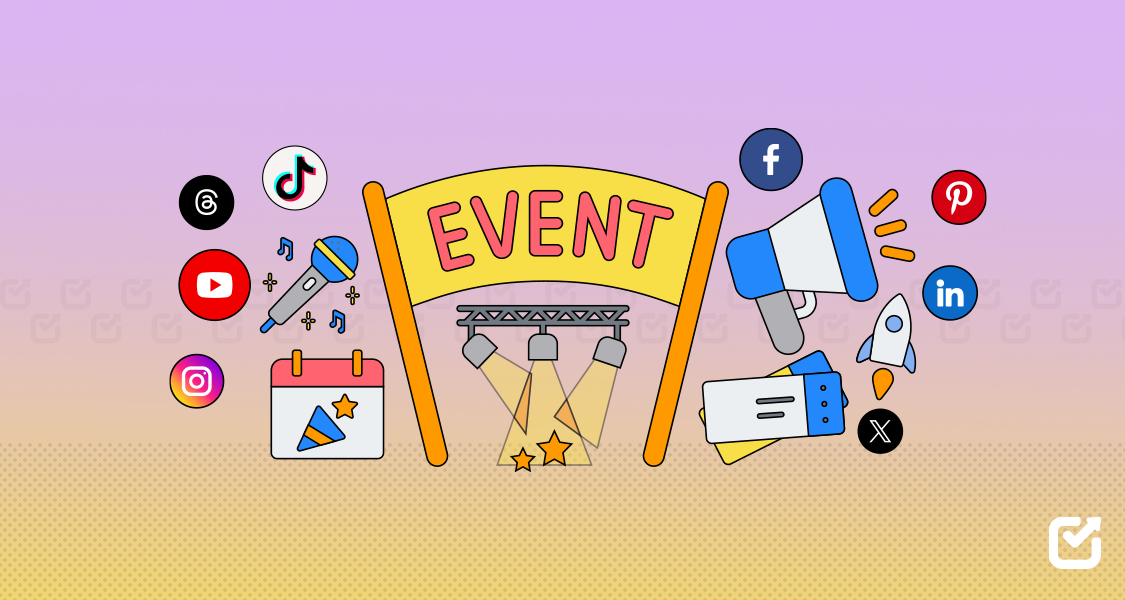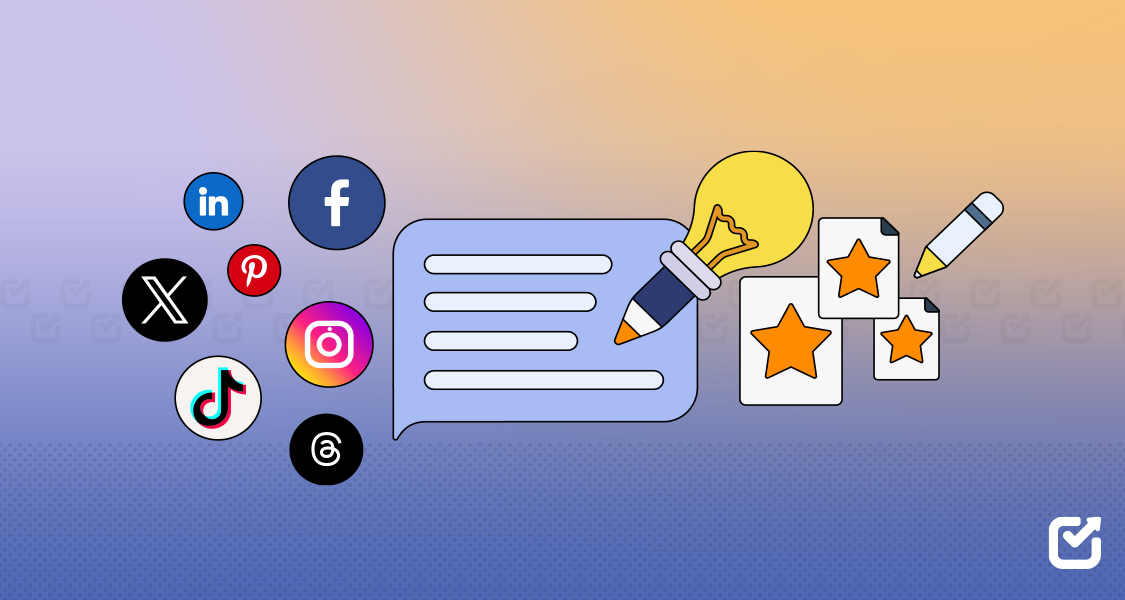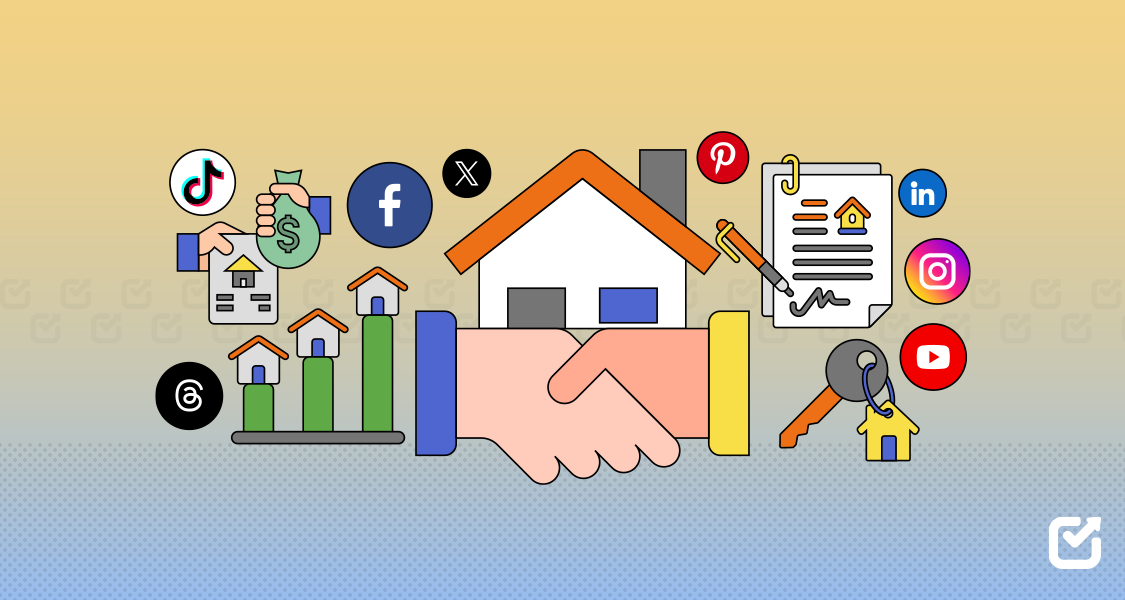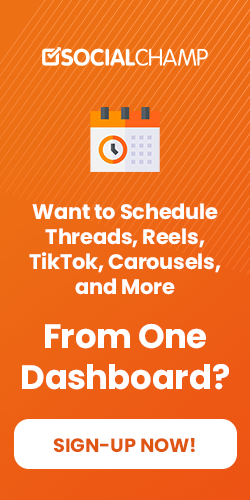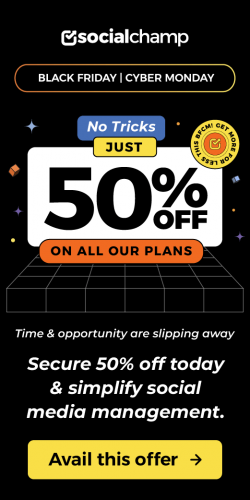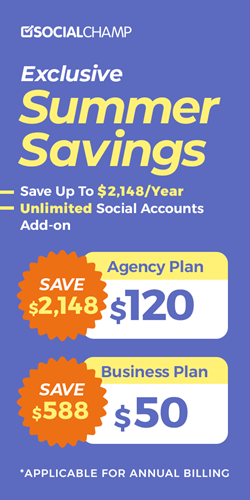Consider this: 78% of event creators utilize social media to increase attendance, and event organizers who prioritize social media marketing report a 25% increase in ticket sales and a 20% rise in brand awareness.
Learning how to promote events on social media is not as difficult as you may think.
All you need is a dependable social media management tool and a good strategy to make your brand shine.
In this guide, we’ll explore strategic approaches to social media event promotion and share tools that can amplify your event’s success.
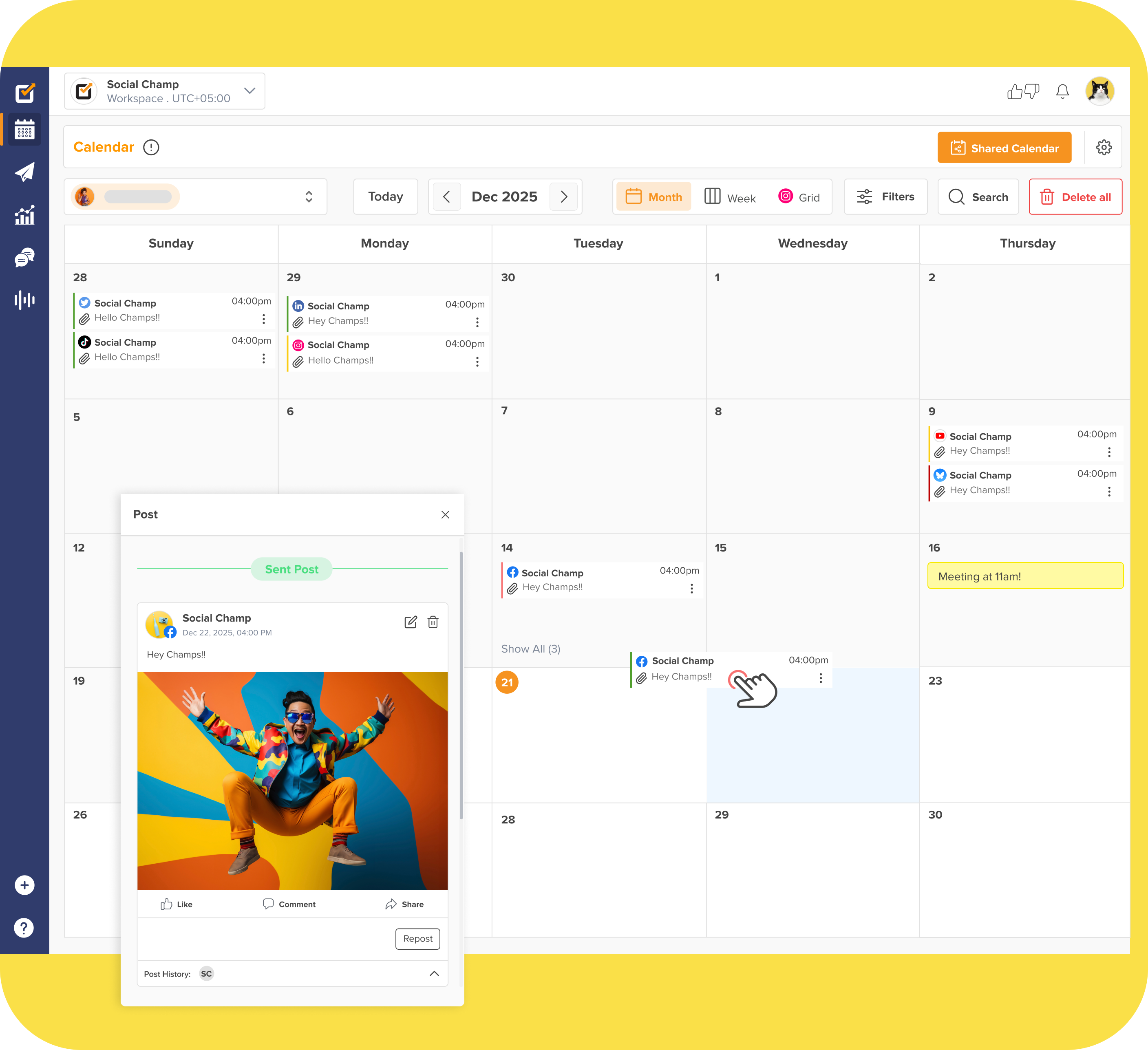
Unlock Effortless Event Promotion With Social Champ!
Don’t let your event get lost in the noise. Social Champ helps you schedule, optimize, and track your social media campaigns like a pro—all in one place.
Short Summary
- Social media is essential for event promotion, boosting ticket sales and brand awareness.
- Understand your audience and use the right platforms, like TikTok for Gen Z and Instagram for visual content.
- Start pre-event promotion early with teasers, countdowns, and early bird offers.
- Partner with influencers and encourage user-generated content to increase trust and engagement.
- Social media ads should be targeted and optimized with A/B testing and retargeting for better results.
- Social Champ streamlines event promotion by managing scheduling, analytics, and collaboration.
- The key is to make event promotion exciting and efficient with the right strategy and tools.
Understand Your Audience and Choose the Right Platforms
Before you schedule a single post or design that flashy Instagram reel, take a step back.
Who are you trying to reach?
Are they Gen Z music lovers, corporate professionals, local families, or die-hard gaming fans?
Your audience should guide every decision—from the content you create to the platforms you use.
Each social media platform attracts a slightly different crowd.
For instance: In 2025, TikTok continues to dominate with Gen Z and younger millennials, while Instagram remains a go-to for lifestyle and visual-heavy content.
LinkedIn is perfect for B2B events and professional gatherings.
Facebook, despite rumors of its decline, is still gold for community events and reaching older demographics. And don’t sleep on YouTube Shorts or Threads—they’re gaining momentum fast.
Once you know where your audience hangs out, meet them there with content tailored to their preferences.
If you’re promoting a professional networking event, long-form LinkedIn posts with value-driven insights might work best.
But if it’s a pop-up street food festival, quick TikToks and colorful Instagram Stories will likely steal the show.
Learn about each platform and then choose the best one for your brand to hit the right target.
Develop a Comprehensive Social Media campaigns for Your Event
A well-thought-out campaign is the backbone of successful event promotion in 2025.
Instead of one-off posts, aim for a strategic rollout that builds momentum and keeps your audience engaged every step of the way.
-
Break It Down Into Phases
Structure your campaign into three clear stages:
- Pre-Event Hype: Build awareness and excitement with teaser content, announcements, and early-bird promotions.
- During the Event: Share live updates, behind-the-scenes moments, and attendee-generated content to drive FOMO.
- Post-Event Follow-Up: Recap highlights, thank attendees, and tease future events to keep your community engaged.
-
Create a Diverse Content Plan
Keep your feed fresh with a mix of content types, such as:
- Teaser videos and trailers
- Countdown posts and reminders
- Speaker/performer spotlights
- Contests and giveaways
- Interactive polls and Q&As
- Branded hashtags for visibility and UGC tracking
-
Schedule and Automate
- Consistency is key—and automation is your friend.
- Use tools like Social Champ to schedule posts across platforms.
- Set up content recycling for evergreen posts (think FAQs or ticket reminders).
- Maintain a content calendar to keep your team aligned and ensure your messaging remains on point.
-
Monitor, Measure & Adapt
- Don’t just post and ghost. Use analytics to tweak your strategy
- Track what content gets the most engagement
- Adjust post timing based on audience activity
- Jump on relevant trends that align with your event vibe
Featured Article: Social Media Marketing for Fashion Brands in 2025
Tips to Implement Pre-Event Promotion Tactics
Now, attention spans are short and competition is fierce—so your pre-event promotion needs to be sharp, strategic, and scroll-stopping. Here’s what you can do!
-
Create Buzz Early
Start promoting at least 4–6 weeks in advance. The earlier you start, the better chance you have to build awareness and drive sign-ups.
- Tease the Event: Drop cryptic hints or sneak peeks to spark curiosity.
- Launch a Countdown: Use Stories or scheduled posts to build anticipation as the date gets closer.
- Announce Early Bird Tickets: Create urgency with limited-time offers.
-
Targeted Content for Specific Audiences
- Don’t just blast the same message everywhere—personalize it.
- Use different tones and content types for different platforms (e.g., professional tone on LinkedIn vs. playful on TikTok).
- Segment audiences based on interest or demographics using platform tools like Facebook’s Ad Manager or LinkedIn’s targeting features.
-
Schedule Smarter With Tools Like Social Champ
Social Champ helps you stay consistent without burning out:
- Schedule your entire pre-event content calendar in advance.
- Use performance analytics to fine-tune your messaging.
- Engage in real-time when posts go live, without being glued to your phone.
-
Use Teasers and Behind-the-Scenes Content
- Share sneak peeks of the venue, lineup, or event prep.
- Introduce your team or speakers through casual, authentic videos.
- Use polls or quizzes to get your audience involved early.
-
Utilize Influencer Partnerships and User-Generated Content
Working with influencers isn’t just about vanity metrics anymore. It’s about trust and relevance.
Whether you’re teaming up with a macro-influencer in your niche or a handful of local micro-influencers, the key is alignment.
-
Partner With the Right Influencers
Choose partners who genuinely connect with your target audience and share your event’s vibe.
Their followers trust their recommendations, and that trust can turn into ticket sales, RSVPs, or app downloads—whatever your event goals are.
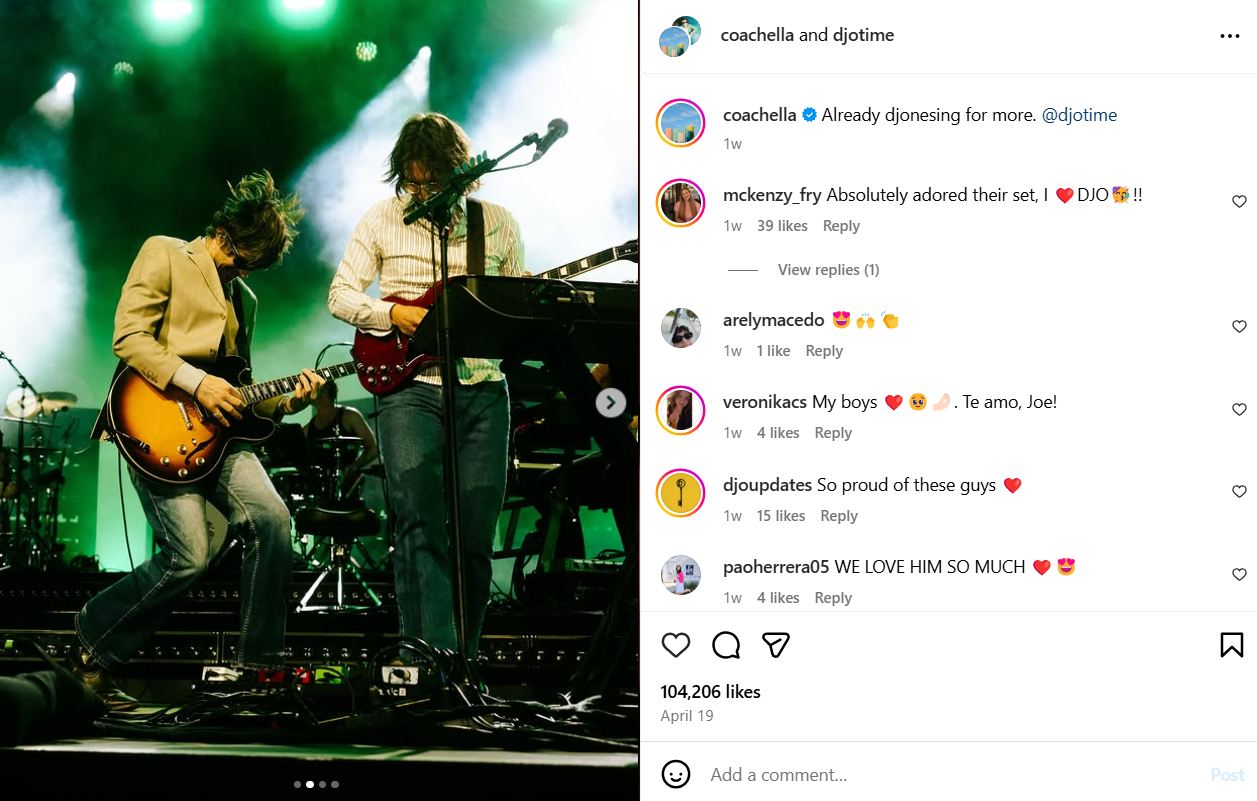
@djotime’s Collaboration Post With @coachella -
Give Them Creative Freedom
Once you’ve brought influencers on board, resist the urge to micromanage.
Give them a clear brief and your event’s vision, but let them speak in their own voice.
Content that feels authentic and unscripted performs better and is far more relatable to their audience.
Think vlog-style “get ready with me” videos, live Q&As, or Instagram Stories from the event that feel personal and behind-the-scenes.
-
Let Your Audience Be the Storyteller
User-generated content is like word-of-mouth, but scaled up. When attendees and followers start posting about your event, it gives others the confidence that it’s worth their time.
Encourage UGC early by:
- Creating a branded hashtag that’s easy to remember
- Running pre-event challenges or giveaways tied to content creation
- Setting up photo-worthy spots at the event for people to snap and share
UGC doesn’t have to be polished to be powerful. In fact, raw, candid content often outperforms highly produced posts because it feels more authentic.
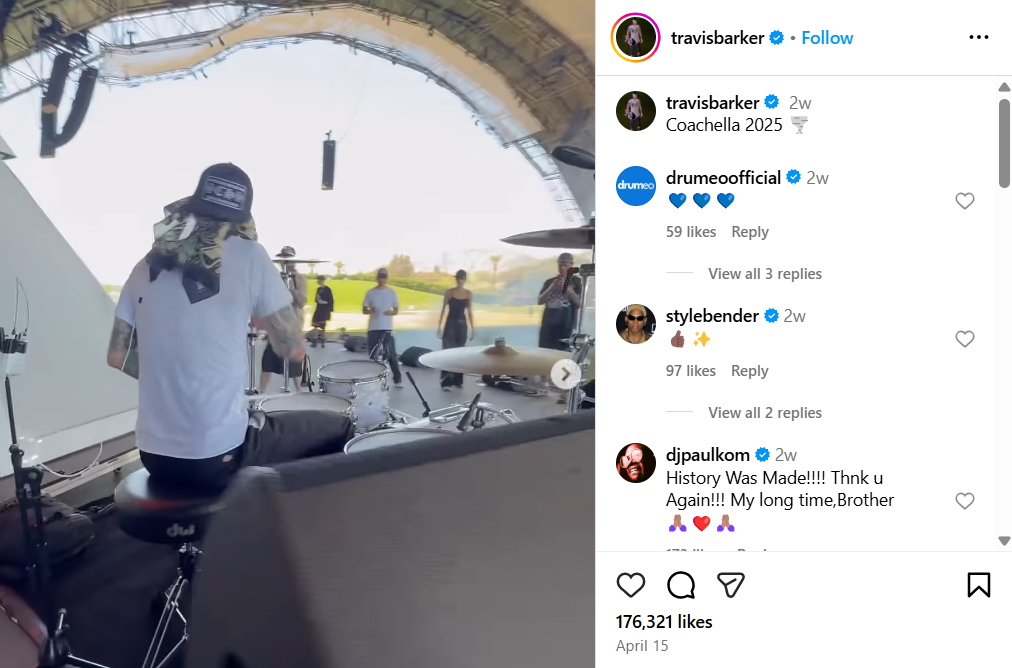
@travisbarker’s Instagram Post for Coachella -
Make It Easy to Share
To encourage UGC, start early. Create a catchy branded hashtag and promote it across all your materials.
Run fun pre-event challenges or giveaways that get people posting before the big day.
During the event, design photo-worthy spaces and interactive moments that beg to be captured and shared. The more fun and effortless it is to post, the more content you’ll collect.
-
Embrace the Realness
UGC doesn’t have to look perfect to be effective. In fact, it’s often the raw, spontaneous, slightly messy content that connects best.
These kinds of posts feel real—and real is what cuts through the noise in today’s crowded feeds.
Featured Article: What Is a UGC Creator and How to Become One in 2025?
Leverage Social Media Advertising and Analytics
Today, social media advertising is smarter, more precise, and more essential than ever—especially when it comes to getting your event in front of the right people at the right time.
-
Set Clear Objectives First
Before diving into any ad spend, take a step back and define what success looks like for your event.
Are you trying to drive ticket purchases?
Increase RSVPs?
Boost visibility in a certain region or demographic?
Your goals will shape everything—from the copy and visuals you use, to how you target your audience and where you allocate your budget.
Clear objectives help you avoid wasting money on broad, unfocused campaigns and instead build ads that align directly with your event outcomes.
-
Start Small, Scale Smart
You don’t need to pour a huge budget into your campaign from day one.
Start with a small spend, see how your ads perform, and then scale up the ones that are delivering results.
This lets you avoid the risk of burning through your budget on underperforming content.
It also gives you room to experiment and find the best performing combinations of audience, message, and design before going big.
-
Go Beyond the Boost Button
It’s tempting to hit “Boost Post” and hope for the best, but the real power lies in crafting targeted ad campaigns using tools like Facebook Ads Manager, LinkedIn Campaign Manager, or TikTok Ads.
Set clear objectives based on your event goals.
Are you trying to drive ticket sales?
Grow RSVPs?
Raise awareness in a specific city?
Once you’ve defined that, build custom audiences using interests, behaviors, demographics, and even past engagement.
You can also retarget people who’ve visited your event page or interacted with past campaigns—perfect for nudging warm leads to take action.
-
A/B Test and Optimize
Not every ad will be a hit—and that’s okay. Use A/B testing to compare different visuals, headlines, or calls-to-action.
You might be surprised by which combinations convert the best.
The beauty of social advertising is that it’s agile. You can start with a small budget, learn from the data, and scale what works. No more guesswork—just informed moves.
-
Retarget for Better Results
One of the most effective tactics in event promotion is retargeting.
This involves serving ads to people who have already shown interest in your event—whether they’ve visited your website, clicked on a previous ad, or interacted with your social media posts.
These audiences are already warmed up and more likely to convert.
Retargeting keeps your event top of mind and gently nudges potential attendees to complete their registration or purchase.
-
Use Analytics to Drive Decisions
Analytics are your campaign’s GPS. Tools like Social Champ offer platform-level insights that go beyond vanity metrics.
You can track which posts are driving traffic, which ones lead to ticket clicks, and what kind of content keeps people engaged.
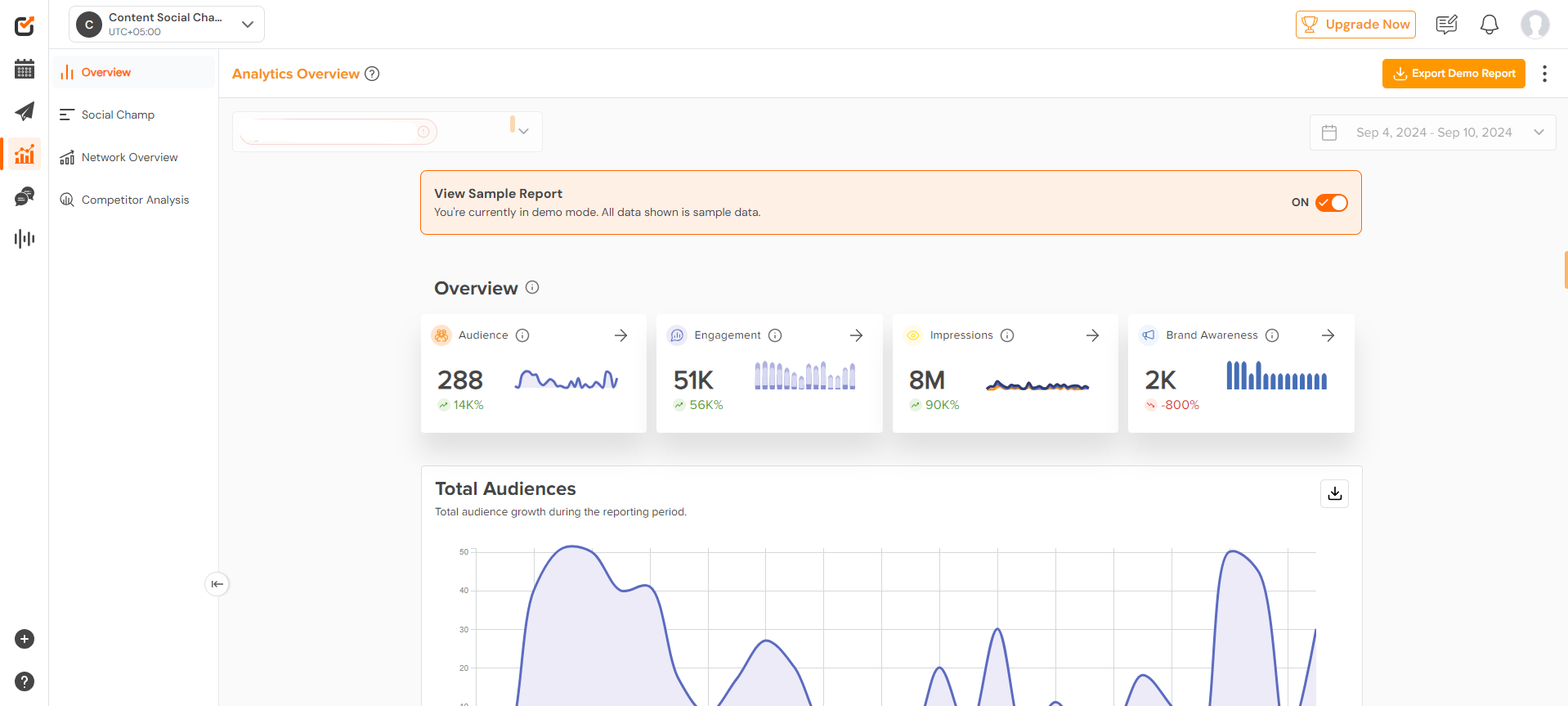
Social Champ’s Analytics Look for patterns:
When is your audience most active?
What formats (video, carousel, stories) are performing best?
Which hashtags or keywords are generating the most traction?
Use this data to refine your strategy in real time. The more you know, the better your next post—and your next campaign—will perform.

See What’s Working and Why— With Social Champ!
Social Champ’s analytics let you track engagement, reach, and clicks to refine your event marketing strategy.
-
Spot the Patterns, Adjust the Plan
Once you’ve got data coming in, it’s time to look for trends. Maybe your audience is most active on weekdays during lunch hours.
Or perhaps video posts are consistently outperforming static images. Whatever the pattern, recognizing it allows you to pivot your strategy in real time.
The key is to stay flexible—using insights to refine your content style, posting schedule, ad targeting, and more—so every move you make is backed by real evidence, not just instinct.
-
Utilize Social Champ for Efficient Event Promotion
Promoting an event on social media can feel like a full-time job. But with the right tools, it doesn’t have to be overwhelming.
That’s where Social Champ comes in—your behind-the-scenes assistant for running smoother, smarter, and more impactful event campaigns.
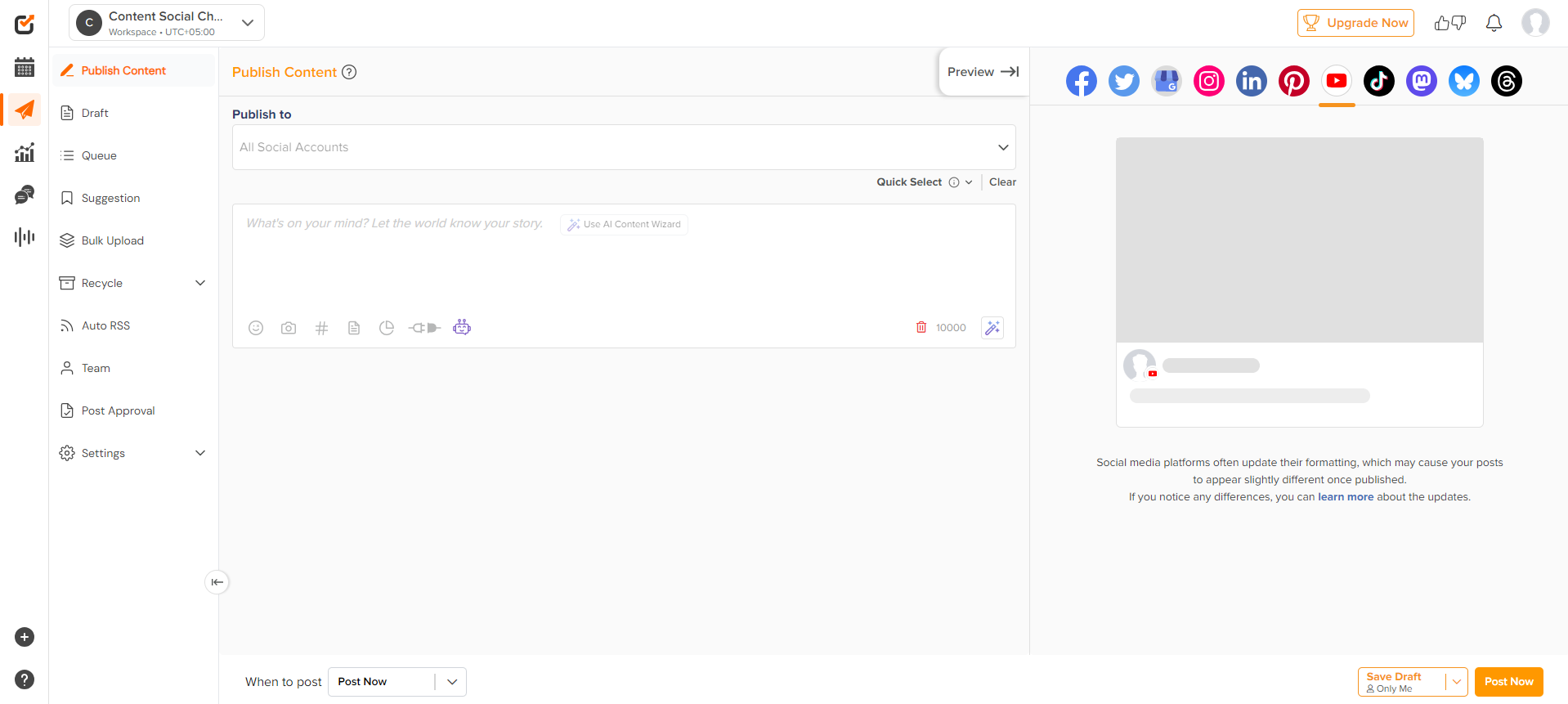
Social Champ’s Dashboard -
Plan and Schedule Like a Pro
With Social Champ, you can schedule your entire content calendar in advance. Whether it’s teaser videos, countdowns, or speaker highlights, just set it and forget it.
It posts across multiple platforms like Instagram, Facebook, LinkedIn, X (formerly Twitter), and more—automatically and at the best times.
-
Get Real Insights That Actually Matter
Instead of guessing what works, Social Champ gives you real-time analytics.
You’ll know exactly which posts are getting clicks, shares, or RSVPs, so you can adjust your strategy on the go and put your energy into what’s performing best.
-
Stay Connected with Your Audience
You can also use the tool to monitor mentions, track your event hashtag, and easily repost user-generated content.
It’s a great way to boost engagement, build hype, and make your community feel like they’re part of the event—even before it starts.
-
Collaborate Without the Chaos
If you’re working with a team, Social Champ makes team collaboration super easy. You can assign roles, get content approved, and manage posts without any back-and-forth confusion.
Everyone stays on the same page, which means fewer mistakes and more time to focus on the actual event.
-
Work Smarter, Not Harder
At the end of the day, Social Champ helps you do more with less.
It saves time, reduces stress, and gives your event the consistent online presence it needs to succeed—without you needing to be glued to your phone.

Your Event Deserves the Spotlight. Let Social Champ Make It Happen.
From creating buzz to tracking every engagement, we’ve got you covered. Don’t miss the chance to turn your event into the talk of the town.
Featured Article: 13+ Best Free Social Media Management Tools Every Marketer Should Know
Conclusion
Event promotion on social media isn’t what it used to be—and that’s a good thing. Today, it’s less about constant posting and more about being intentional.
Knowing your audience, creating real excitement, and staying consistent can make all the difference.
Tools like Social Champ are a huge help in making that happen.
It takes a lot of the stress out of planning and posting, and gives you space to actually focus on the bigger picture—like building buzz and creating a great event experience.
At the end of the day, promoting your event should feel exciting, not overwhelming. With the right strategy and a tool that’s got your back, you’re already halfway there.
Frequently Asked Questions
1. How Can I Effectively Use Social Media to Promote an Event?
2. What Are the Best Social Media Platforms for Event Marketing?
Facebook: Event pages & RSVPs
LinkedIn: Professional events
X (Twitter): Real-time updates
TikTok: Viral, creative reach
